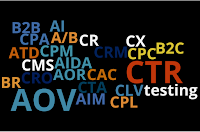
I will be conducting a full day advanced digital analytics class at DA Hub in Austin on Oct 17th.
Do you have experience with influencing business change? Are you ready to move into reflective analysis that drives real return on investment for your company? Want to advance your career prospects? This course will help you deliver all of that.
This interactive full day advanced digital analytics course will give you practical tools to elevate your analytics skills. It will also help you transition into a thought leader within your organization.
Building upon the Fundamentals of Digital Analytics, this course encourages participants to critically examine methods and metrics in ways appropriate for their specific business model.
Learn how to effectively communicate analytical data, best practices for site and campaign design, and examine campaign performance standards from the CFO perspective using control groups and simple predictive models.
Upon completion of this course, participants will be able to:
- Define gaps between measurement practices and business goals for the company
- Create a framework for standardizing the evaluation of current performance measurements for website, search, display, email, affiliate and social channels.
- Understand how to effectively measure campaigns
- Understand how to find right opportunities for improvement and optimize them
- Provide feedback on the design, execution, and outcomes of testing efforts
- Manage a results-oriented analytical culture adept at driving business change
The course follows the Digital Analytics Association's syllabus and is endorsed by it. Participants will be awarded six Professional Development Units (PDU) towards their DAA Certified Web Analyst certification renewal credit.
This works shop will be held in Austin, TX on Oct 17th along with DA Hub. Register at https://www.digitalanalyticshub.com/us_2018/anil_batra?reg_type_id=19719
About DA Hub
DA Hub is bringing together top analytics professionals for in-depth idea exchange. Leading digital analytics and optimization practitioners come from across the US to discuss and share the latest developments, challenges and opportunities in the industry. It is a unique opportunity to be part of the conversation. With over 50 huddles to pick from, run by the industry’s foremost practitioners and only 160 places available, you should book your place for this year’s event to meet, learn, share and network. Get details at https://www.digitalanalyticshub.com/us_2018/home?reg_type_id=19719










